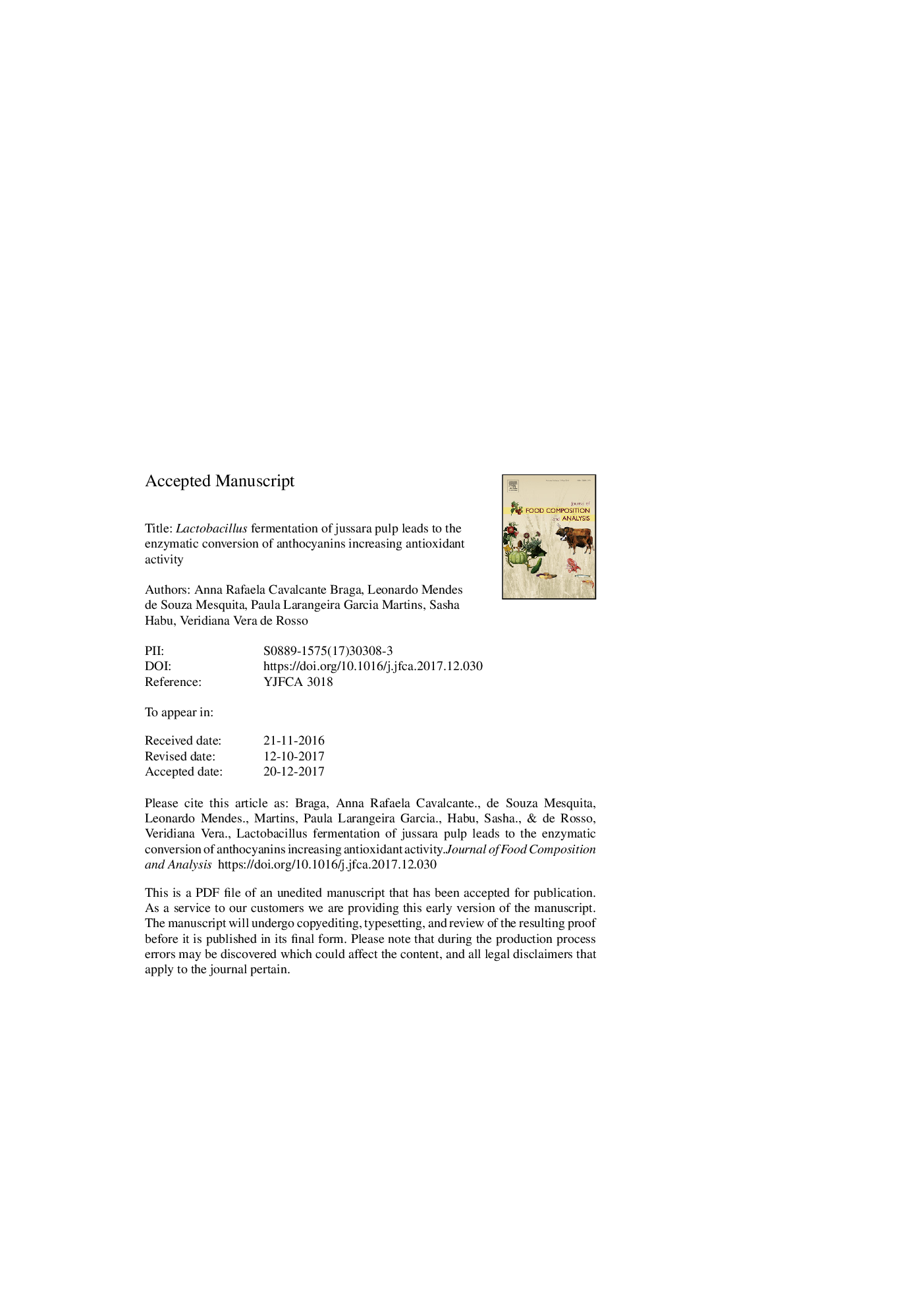| Article ID | Journal | Published Year | Pages | File Type |
|---|---|---|---|---|
| 7619636 | Journal of Food Composition and Analysis | 2018 | 31 Pages |
Abstract
Bacteria possessing an enzymatic system able to metabolize anthocyanins may play a major role in the production of compounds with different bioavailability and biological activity. In this study, Lactobacillus and Bifidobacterium strains were screened for the enzymatic activities of α-galactosidase, β-galactosidase and β-glucosidase. These strains were also screened for their ability to convert the anthocyanins from jussara. The nine evaluated strains produced at least two of the three enzymes; they were also capable of changing the main anthocyanin's chromatographic profile. The values of cyanidin 3-glucoside and cyanidin 3-rutinoside, following fermentation, ranged from 0 to 3217.7 and 4323.3 to 17190.9â¯Î¼g/100â¯mL of medium fermented, respectively. The Lactobacillus deubruekii strain was able to change the anthocyanins from jussara pulp more extensively. Therefore, a culture medium containing jussara pulp and glucose was optimized using the experimental design as a statistical tool. Medium maximization occurred with a mixture composing 20% jussara pulp and 10% glucose in which the microorganism was able to reach the highest enzymatic production as well as produce the most extensive conversion of the main anthocyanins. Protocatechuic acid was the main enzymatic bioconversion product identified following fermentation. In addition, there was an observed increase in antioxidant activity following the jussara pulp fermentation process.
Keywords
Related Topics
Physical Sciences and Engineering
Chemistry
Analytical Chemistry
Authors
Anna Rafaela Cavalcante Braga, Leonardo Mendes de Souza Mesquita, Paula Larangeira Garcia Martins, Sascha Habu, Veridiana Vera de Rosso,
